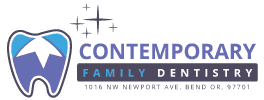Gum disease, or periodontal disease, is a prevalent oral health concern affecting individuals of all ages. It is crucial to recognize that the approach to managing gum disease may vary across different age groups due to each age bracket’s unique challenges and susceptibilities. This comprehensive article will explore the various aspects of gum disease and age and delve into specialized care practices tailored to specific age groups, emphasizing prevention, early detection, and effective management.
Causes of Gum Disease
Gum disease typically stems from plaque accumulation on teeth and the gum line. Plaque, a sticky coating containing bacteria, prompts an inflammatory response from the immune system. This response manifests as redness and swelling in the gum surrounding the tooth.
In every individual’s mouth, there exists a variety of bacteria. Plaque continually forms as certain bacteria feed on the sugars in the foods and beverages consumed. This plaque creates an ideal environment for bacteria that can lead to gum disease and tooth decay to thrive and multiply. Some causes of gum disease are as follows:
- Hormonal changes: Changes in hormones, experienced during phases like pregnancy, puberty, menopause, and monthly menstruation, heighten gum sensitivity, creating a conducive environment for the onset of gingivitis.
- Illness: Certain illnesses can impact gum health, particularly conditions like cancer or HIV that interfere with the immune system. Diabetes, due to its influence on blood sugar utilization, increases the susceptibility to infections, including periodontal disease and cavities.
- Certain Medication: Medications may affect oral health by diminishing saliva flow, which protects teeth and gums. Specific drugs, such as the anticonvulsant Dilantin and the anti-angina medications Procardia and Adalat, can lead to abnormal growth of gum tissue.
- Unhealthy Habits: Unhealthy habits like smoking hinder the natural repair processes of gum tissue.
- Poor Oral Hygiene Habits: Inadequate oral hygiene practices, such as neglecting daily brushing and flossing, create a more favorable environment for developing gingivitis.
- Family History: A familial history of dental disease can also contribute to the likelihood of gingivitis development.
Stages of Gum Disease
Gingivitis and periodontitis are the primary stages of gum disease.
-
Gingivitis
Gingivitis marks the early phase of gum disease, primarily affecting the surface layers of the gum, especially where it meets the tooth. During this stage, there is no damage to the deeper parts of the gums, teeth, or bone.
Signs of gingivitis include:
- Bleeding gums, especially during brushing or eating
- Redness and swelling of the gum
The encouraging news is that gingivitis can be reversed. Even if your gums appear red or swollen, it is essential to continue brushing with a soft toothbrush. This action helps eliminate the bacteria and plaque causing the issue, and the gums should improve over time. Should your gums persistently bleed or fail to improve after four weeks, it is advisable to consult your oral health professional.
-
Periodontitis
The gum’s role is to act as a protective covering for the bone supporting your teeth. The periodontium, a collective term for the gum and bone structures surrounding and supporting the teeth, maintains their position. The gum safeguards the periodontium by creating a seal around the tooth’s neck.
Periodontitis results from the inflammation of the periodontium, triggered by the bacteria in plaque and the body’s immune response to it. It represents an advanced stage of gum disease that may develop if gingivitis is left untreated.
Structures affected by periodontitis encompass the covering of the tooth root (cementum), the bone, and the fibers connecting the tooth root to the bone (periodontal ligament).
When gum disease compromises the gum seal, it creates spaces between the tooth root and the gum, referred to as ‘periodontal pockets.’ These pockets become reservoirs for bacteria, intensifying the harm to the periodontium. Gradually, bone loss occurs, and larger gaps emerge between the tooth and the gum. These spaces may resemble black triangles between the teeth, which cannot be “filled” by an oral health professional.
Failure to address periodontitis can lead to severe damage to the structures that anchor the tooth securely in the gum. Teeth may loosen, become painful, and, in extreme cases, necessitate removal.
Certain risk factors, such as smoking and poorly managed diabetes, elevate the susceptibility to periodontitis.
Common signs of periodontitis include:
- Bleeding gums
- Red or swollen gums
- Receding gums (where the gum line withdraws from the tooth, giving the appearance of longer teeth)
- Persistent bad breath
- Unpleasant taste in the mouth
- Discomfort or tenderness when biting
- Loosening of teeth or changes in tooth positioning.
Managing Gum Disease in Different Age Groups
Gum Disease in Children and Adolescents:
Contrary to common belief, children and adolescents are not immune to gum disease and age. While it may not manifest as frequently as in adults, factors such as poor oral hygiene, inadequate nutrition, and certain medical conditions can make this age group susceptible. Prevention is key, and parents should instill good oral habits, including regular dental check-ups, proper brushing, and flossing.
Specialized Care for Young Adults:
As individuals transition into young adulthood, lifestyle factors become increasingly influential. Social habits such as smoking and excessive alcohol consumption can exacerbate gum disease and age. Additionally, hormonal changes, particularly in women, can impact gum health. Young adults should focus on maintaining a balanced lifestyle, regular dental visits, and adopting effective oral hygiene practices.
Midlife and the Impact of Aging:
Middle-aged individuals may face additional challenges, including hormonal shifts, medical conditions, and the cumulative effects of long-term neglect. This age group is prone to both gingivitis and periodontitis. Management involves a combination of professional dental care, lifestyle modifications, and awareness of systemic health connections, such as diabetes and cardiovascular diseases.
Gum Health for Seniors:
As individuals age, they may be more susceptible to gum disease and age due to factors like decreased saliva production, medications, and other chronic conditions. Tooth loss and compromised oral function can impact nutrition and overall well-being. Specialized care for seniors includes regular dental check-ups, adapted oral hygiene routines, and awareness of the link between oral health and systemic diseases, particularly cognitive decline.
Innovative Technologies and Treatments:
Advancements in dental technology have revolutionized the management of gum disease. Laser therapy, antimicrobial agents, and regenerative procedures offer effective alternatives to traditional treatments. Understanding these options can empower individuals of all ages to make informed decisions about their oral health.
The Role of Nutrition in Gum Disease Prevention:
A well-balanced diet rich in vitamins and minerals is pivotal in preventing and managing gum disease. Nutrients like vitamin C, D, and omega-3 fatty acids contribute to gum health. Tailoring nutritional advice to different age groups can enhance the effectiveness of preventive strategies.
Oral Hygiene Practices Across the Lifespan:
Consistent oral hygiene practices are fundamental in preventing and managing gum disease. Proper brushing, flossing, and incorporating antimicrobial mouthwashes can significantly reduce the risk of infection. Age-specific recommendations, such as choosing the right toothbrush or adapting flossing techniques, should be considered for optimal oral care.
The Importance of Regular Dental Check-ups:
Regular dental check-ups are crucial at every stage of life. Routine examinations enable early detection of gum disease and facilitate timely intervention. Dentists can provide personalized advice, conduct professional cleanings, and monitor changes in oral health, contributing to comprehensive gum disease management.
Conclusion:
Gum disease is a multifaceted oral health concern that requires tailored care approaches across different age groups, emphasizing the link between gum disease and age. By understanding the unique challenges and susceptibilities associated with each stage of life, individuals can adopt proactive measures to prevent, detect, and manage gum diseases effectively. Specialized care, advancements in dental technology, and a commitment to oral hygiene can contribute to a lifetime of optimal gum health. It is never too early or too late to prioritize gum health, and by doing so, individuals can safeguard their smiles and overall well-being across the lifespan.
FAQs related to Gum Diseases and Age Groups
-
At what age should I start paying attention to gum health for my child?
Answer: It’s essential to focus on your child’s gum health as soon as their first teeth emerge, typically around six months. Early oral hygiene habits, such as gentle brushing with an age-appropriate toothbrush and regular dental check-ups, can lay the foundation for a lifetime of healthy gums.
-
How does hormonal change during pregnancy impact gum health, and what special care is needed?
Answer: Hormonal changes during pregnancy can make gums more sensitive and prone to gingivitis. Pregnant individuals should pay extra attention to oral hygiene, regular brushing, flossing, and dental check-ups. Consulting with a dentist about any specific concerns or undergoing preventive measures can help maintain optimal gum health during pregnancy.
-
Is gum disease inevitable with aging, and what can seniors do to manage it effectively?
Answer: While gum disease becomes more prevalent with age, it is not inevitable. Seniors can take proactive steps to manage gum health, including regular dental check-ups, adapted oral hygiene routines, and awareness of the link between oral health and systemic diseases. Embracing advancements in dental technology and a balanced diet contribute significantly to maintaining healthy gums in the senior years.



